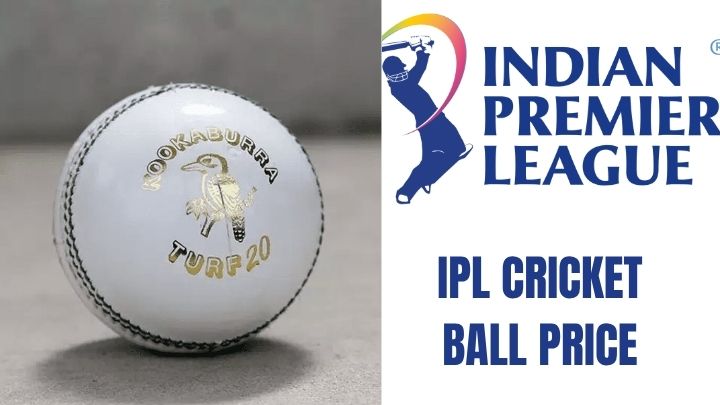In cricket, jersey numbers are more than just digits stitched onto a shirt — they’re symbols of pride, superstition, and personal legacy. From Sachin Tendulkar’s jersey number 10 to MS Dhoni’s number 7, every number tells a story, connecting fans to their favorite players through emotion and identity.
But have you ever wondered why cricketers wear these numbers, where the tradition began, or what meaning lies behind them? Let’s explore the history, meaning, and iconic stories behind the most famous cricket jersey numbers in the world.
The History of Cricket Jersey Numbers
Before the 1990s, cricket jerseys were plain whites with no names or numbers. The focus was purely on the game, and fans identified players by faces or commentary. Everything changed in the late 1970s when Kerry Packer’s World Series Cricket revolutionized the sport with colored kits, lights, and jersey numbers.
By the 1999 ICC Cricket World Cup, numbers and player names became standard in One-Day Internationals (ODIs). Test cricket held onto its traditional whites until the 2019 Ashes, when jersey numbers were officially introduced as part of the World Test Championship.
Since then, jersey numbers have become an essential part of cricketing identity — practical for broadcasters, symbolic for players, and emotional for fans.
Why Do Cricketers Wear Jersey Numbers?
Originally, cricket jersey numbers helped commentators, umpires, and fans distinguish players during televised matches. Today, they represent much more:
-
Personal Identity: Players often choose numbers linked to birthdays, lucky numbers, or significant life events.
-
Superstition & Belief: Many believe certain numbers bring good fortune or mental confidence.
-
Branding: Numbers help players build a personal brand — think of the global recognition of “Dhoni 7” or “Kohli 18.”
-
Fan Connection: For supporters, buying a jersey with their favorite cricketer’s number is an emotional connection to the game.
In short, jersey numbers in cricket are a mix of practicality, personality, and passion.
The Meaning Behind Cricket Jersey Numbers
Every number on a cricketer’s back tells a story — from family tributes to memorable milestones. Here are some of the most iconic cricket numbers and their personal meanings.
| Player | Jersey Number | Meaning / Story Behind It |
|---|---|---|
| Sachin Tendulkar | 10 | Symbol of perfection and leadership. “10” sounds like “Tendulkar.” The BCCI later retired this number in his honor. |
| MS Dhoni | 7 | Dhoni was born on July 7, 1981 (7/7/81). The number represents luck and calmness. |
| Virat Kohli | 18 | Kohli’s father passed away on December 18 — the number is a tribute to him. |
| Chris Gayle | 333 | His highest Test score (333) — symbolizing his dominance in cricket. |
| Shane Warne | 23 | Inspired by basketball legend Michael Jordan, who also wore 23. |
| Ricky Ponting | 14 | Ponting’s favorite number, worn throughout his career and synonymous with his leadership. |
| Jasprit Bumrah | 93 | A nod to his birth year, 1993. |
| Rohit Sharma | 45 | Suggested by his mother, as 4 + 5 = 9, her lucky number. |
| Shoaib Akhtar | 14 | Randomly assigned early on but became iconic with his fiery pace. |
| Jacques Kallis | 3 | Represents balance and completeness — fitting for one of the greatest all-rounders. |
| David Miller | 10 | Continues the legacy of aggressive middle-order batsmen wearing the number. |
| AB de Villiers | 17 | Became symbolic of creativity and adaptability. |
| Glenn McGrath | 11 | His bowling number — became an emblem of his precision and consistency. |
These cricket legends’ jersey numbers reflect their journeys, beliefs, and impact — turning ordinary digits into eternal symbols.
Retired and Reserved Jersey Numbers in Cricket
Cricket doesn’t officially retire numbers like football or basketball, but respect for legends has created informal retirements:
-
Sachin Tendulkar’s #10 – Retired by the BCCI after Shardul Thakur wore it briefly and fans objected.
-
Phillip Hughes’ #64 – Not officially retired but never reused after his tragic death in 2014.
-
MS Dhoni’s #7 – Not formally retired, but no Indian player is expected to wear it anytime soon.
These gestures highlight how deeply cricket jersey numbers are tied to legacy and respect.
The Role of Jersey Numbers Across Formats
Jersey numbers vary across formats and tournaments but often stay consistent for brand identity:
-
ODI & T20 Cricket: Players use the same numbers across international and franchise cricket (e.g., IPL, BBL).
-
Test Matches: Numbers were introduced in 2019, and most players kept their ODI/T20 numbers.
-
Franchise Leagues: Players often retain their signature numbers for fan recognition — Dhoni’s 7 for CSK, Kohli’s 18 for RCB, etc.
Here’s a quick snapshot of famous ODI and T20 jersey numbers:
| Format | Player | Number | Team/Franchise |
|---|---|---|---|
| ODI | Virat Kohli | 18 | India |
| ODI | Rohit Sharma | 45 | India |
| ODI | Chris Gayle | 333 | West Indies |
| T20 | MS Dhoni | 7 | Chennai Super Kings |
| T20 | Rashid Khan | 19 | Afghanistan / Gujarat Titans |
| IPL | AB de Villiers | 17 | Royal Challengers Bangalore |
| IPL | Hardik Pandya | 33 | Mumbai Indians / GT |
| IPL | Jasprit Bumrah | 93 | Mumbai Indians |
Fun Facts and Trivia About Cricket Jersey Numbers
(Keywords: cricket jersey numbers trivia, cricket jersey numbers list, cricket jersey numbers worldwide)
-
Number 10 has global prestige — from Tendulkar in cricket to Messi in football.
-
Chris Gayle’s 333 is the only triple-digit cricket jersey number that became legendary.
-
Shardul Thakur’s 10 controversy led to the unofficial retirement of the number in India.
-
Shane Warne’s 23 remains one of the most recognized numbers in Australian sport.
-
Virat Kohli and Dhoni’s numbers (18 and 7) are among the best-selling jerseys in the IPL.
The Superstition Behind Cricket Jersey Numbers
Many cricketers are known for being superstitious — and their numbers reflect it.
-
Sehwag, once wearing 44, dropped it after poor performances and switched to 00.
-
Rohit Sharma’s 45 was chosen based on numerological advice.
-
Dhoni believes 7 brings him balance — and his calm leadership backs that up.
-
Kohli’s 18, tied to his father’s memory, is said to keep him grounded and motivated.
Superstition or symbolism, these numbers have become powerful psychological anchors for players worldwide.
The Cultural and Commercial Impact of Jersey Numbers
Beyond personal stories, cricket kit numbers have become integral to global cricket culture:
-
Fan Identity: Wearing “Kohli 18” or “Dhoni 7” jerseys signifies loyalty and emotion.
-
Merchandising Power: Teams generate millions in jersey sales, driven by iconic numbers.
-
Legacy Branding: Younger players often emulate their idols’ numbers, keeping traditions alive.
Numbers now bridge generations — uniting fans across eras, formats, and nations.
Also Read:
15 Most Beautiful Women Cricketers In The World
Who is the Richest Cricketer in the World
Conclusion: Why Cricket Jersey Numbers Will Always Matter
Cricket jersey numbers are not just digits — they’re stories stitched in fabric. They reflect emotion, superstition, and legacy.
From Tendulkar’s 10 to Dhoni’s 7 and Kohli’s 18, these numbers represent much more than identity — they represent inspiration.
As cricket continues to evolve through T20 leagues and new generations of stars, these numbers will remain eternal — connecting the past, present, and future of the game.





